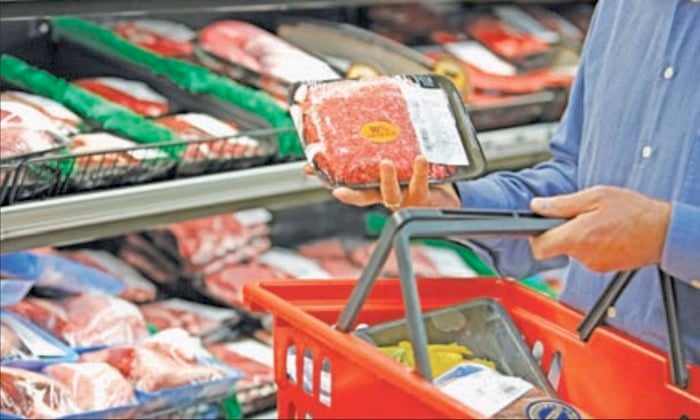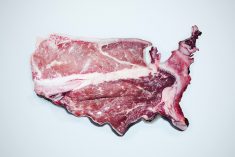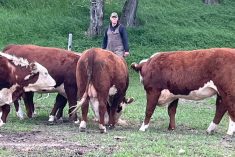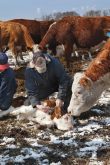The confirmed new case of BSE in Alberta on Feb. 13 has caused Chian, Peru, Belarus and Taiwan to place temporary restrictions on Canadian beef.
South Korea temporarily suspended imports immediately after the confirmed case while Indonesia has placed temporary restrictions on some non-edible meat products.
The ability to persuade or educate the consumer is extremely challenging at the best of times and there is a fair amount of fearmongering-type advertising constantly working against cattle producers. While this recent case of BSE once again reinforced the Canadian Cattle Identification Agency’s (CCIA) traceability program, it is important to remember there could always be another strain of bacteria or disease that causes trade disruptions. It is important that cattle producers, whether large or small, are on the same track, across the country.
Read Also

Harvest wraps up and fall work begins
At the Eppich famly ranch in western Saskatchewan, the fall harvest was successful with few breakdowns, cows and calves have been sorted and a new tractor has arrived
The livestock traceability program has three pillars — premise identification, animal identification and animal movement. These three pillars ensure an adverse disease outbreak is managed efficiently and effectively to minimize trade disruptions. Age verification is also part of this process. Saskatchewan does not have mandatory premise ID and producer groups are lobbying government for this legislation. Most producers understand why this is necessary for food and industry safety, which I don’t have to discuss.
Change in diets
Canada and the U.S. have an aging population. When the baby boomers were in their prime earning years, beef was a staple in their diet. Once people move into their retirement years, they eat less beef and in many cases, health issues become more of a concern. As people get older, their bodies become more sensitive to certain foods or specific food additives. For example, there are studies in regards to red meat and certain types of cancers.
Even young adults are watching their diets more closely than ever before, despite the rising obesity epidemic, which can be attributed to a whole dictionary of health problems. Once people enter their late 20s and 30s, after their metabolism starts to slow down, body weight becomes more of a personal issue. Different ethnicities living within North America may not always have the same cultural view of beef. It is not always a staple item, especially when these immigrants have lower income.
Research is being conducted on “foodceuticals” and functional foods regarding beef products. Entering into this environment is also a need for the traceability program, which might be considered value added processing. This is the food trend of the future with rising health care costs.
Functional food products are outpacing the traditional processed food market, according to Agriculture and Agri-Food Canada. Health Canada defines a functional food as “a conventional food that is consumed as part of a usual diet, and is demonstrated to have physiological benefits and/or reduces the risk of chronic disease beyond basic nutritional functions.”
Labelling part of trend
I encourage beef producers to check out and read articles on the BCRC (Beef Cattle Research Council) website. I strongly believe in the future we will see beef products on the retail shelf with the functional characteristic labelled both in Canada and in foreign markets. I’ve mentioned in the past articles that people can have their DNA analyzed and then have recommendations on which foods will be more beneficial for their DNA. Labelling will be become more important as this DNA becomes more common.
Country-of-origin labelling (COOL) can be considered a double-edged sword. There has been a fair amount of resources arguing against the U.S. policy regarding COOL. However, consumers are becoming more conscious of where their food is grown, how it was produced and how animals were treated.
In some cases, consumers also want to feel at ease that everyone involved made a fair living. I wonder if fighting COOL is counterproductive longer term because it is going against modern food standards. Cattle producers are going through all the work for traceability and yet in the end, we want the foreign consumer to be “origin blind” about the product they’re eating.
The future trend of food production and processing is more labels and functional characteristics on the food. COOL is simply step one. In the future, the consumer will naturally demand COOL and more. The U.S. is implementing a socialist health care policy; food labelling and traceability can bring down health costs if there is an E. coli outbreak or some other problem. We’ve all had discussions with Americans that don’t know where Canada is on the globe or think that Canada is a Third World country. In any case, this isn’t a reason to go backward in food labelling.
Traceability is important to manage a disease outbreak. BSE is in the forefront but there could be other diseases or related problems in the future. Traceability can also be considered value-added processing. Functional foods are the future trend in food production and producers will start to feed animals for specific functional food characteristics. Labelling of origin and other functional characteristics will be more important in all markets in the future.
















